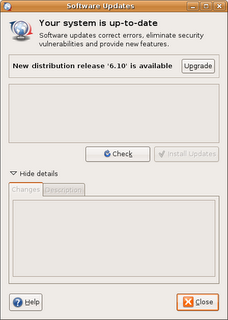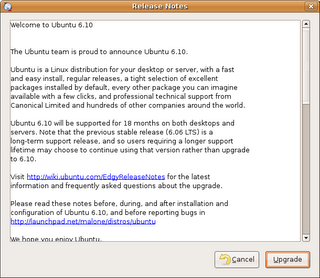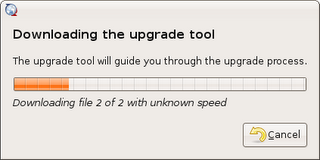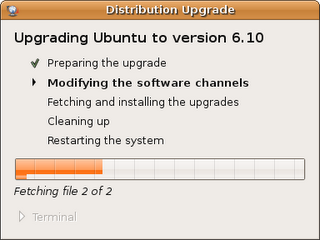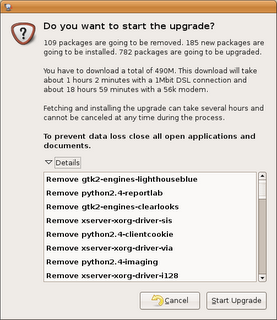Edgy includes some cool new stuff, including:
- Tomboy: an easy-to-use and efficient note-taking tool.
- F-Spot: a photo management tool that enables tagging, photo editing and automatic uploading to on-line web management sites such as Flickr.
- GNOME 2.16: which in addition to new features such as enhanced power management, makes the GNOME desktop more secure, faster and more stable.
- Upstart: substantially faster startup and shutdown, plus bonus high-resolution graphics.
- Firefox 2.0: offering inline spell check support in web forms, easy recovery of crashed sessions, built-in phishing detectors, enhanced search engine management with built in OpenSearch support, and better support for previewing and subscribing to web feeds.
- Evolution 2.8.0: which brings new features such as vertical message
panes. - Proactive security features, preventing many common security vulnerabilities even before they are discovered.
- KDE 3.5.5: ease of use, contemporary functionality and outstanding graphical design.
- Digikam: advanced digital photo management in the box.
- Guidance: overhauled power management.
- Hardware Database: helping Kubuntu work on more of your computers.
- Laptop Buttons: many multimedia buttons work automatically.
- Zeroconf: easy network-based sharing by just clicking a tick-box.
- System Settings: redesigned to simplify administration.
Right now I am updating, and when I am finished I will post here a tutorial how to upgrade from 6.06 Dapper to Edgy :)
Oh, and here are the download links, if you still haven`t tried this wonderful distribution:
Download Ubuntu
Download Kubuntu
... and have a nice weekend :)

